Planting and maintaining a garden can be a fulfilling and gratifying experience. It allows you to reconnect with nature and adds beauty and charm to your surroundings. However, starting a garden can be daunting for many, especially for those with limited gardening experience.
With so many different types of plants and flowers, it can be overwhelming to decide which ones to incorporate into your garden. Here we will cover everything you need to know about planting yarrow, including tips and tricks for garden success planting yarrow made easy.
We’ll cover topics like choosing the right spot, preparing the soil, fertilizing, watering, and pruning. We’ll even provide troubleshooting advice for common yarrow growing problems. Additionally, we’ll explore the benefits of yarrow in your garden and popular varieties of this beautiful plant.
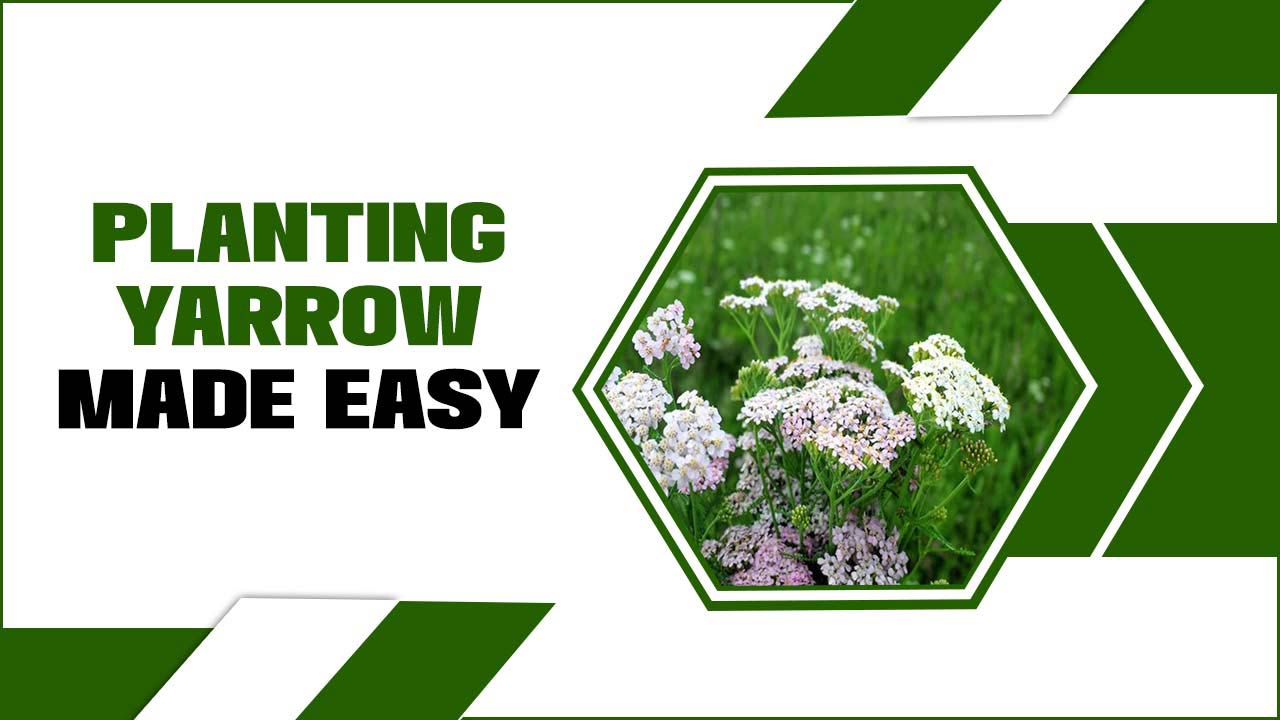
Choosing The Right Spot For Planting Yarrow
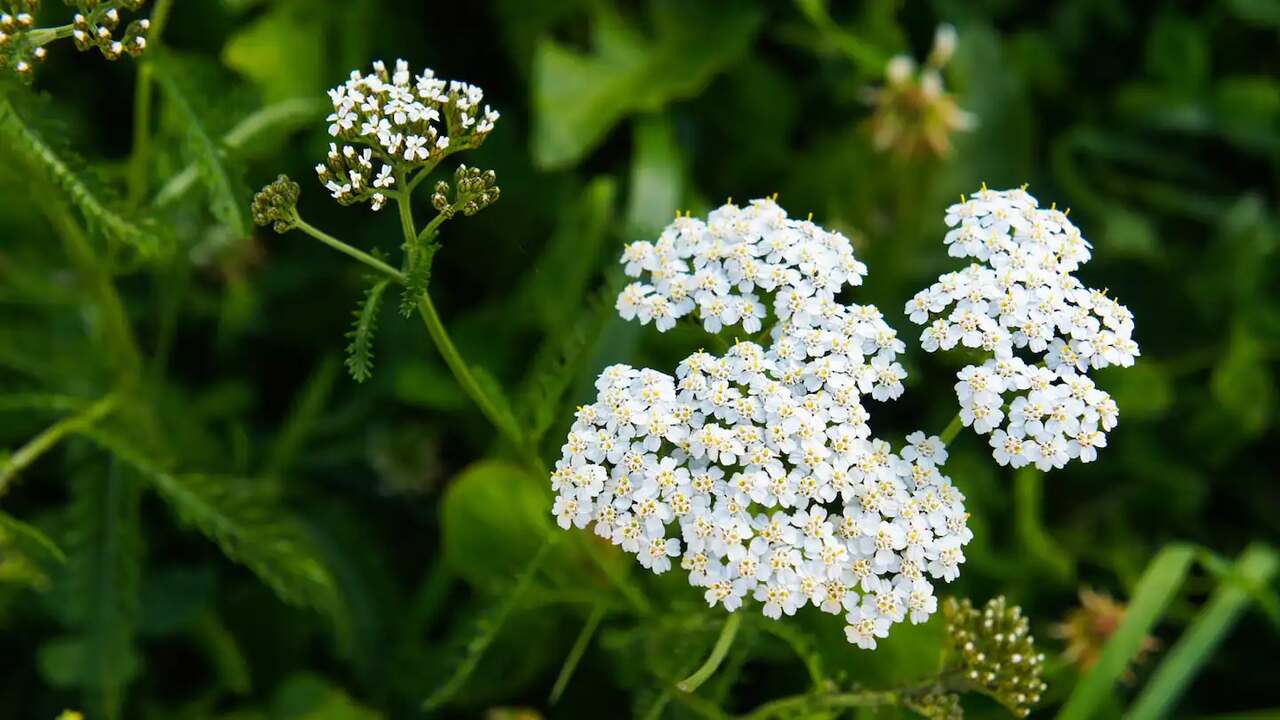
Choosing the right spot for planting yarrow is crucial to ensure its success in your garden. Yarrow thrives in full sun, so choosing a location that receives at least six hours of direct sunlight each day is important. Additionally, yarrow prefers well-drained soil, so it is best to avoid areas prone to standing water or heavy clay soil.
It is also worth noting that yarrow can tolerate a wide range of soil types and pH levels, making it a versatile plant for many gardeners. By selecting the right spot for planting yarrow, you can provide it with the ideal conditions to grow and flourish in your garden.
Planting Yarrow Made Easy: 10 Tips And Tricks For Garden Success
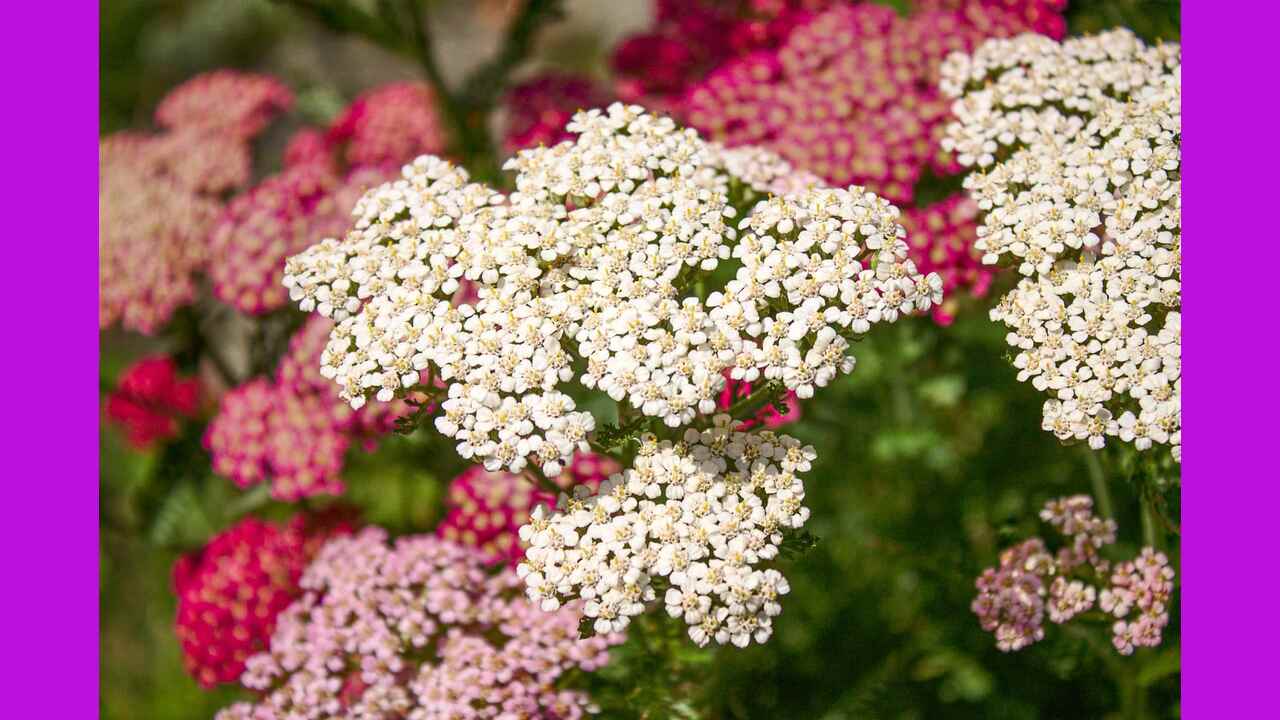
Planting yarrow is a relatively easy process for both experienced gardeners and beginners. Also, planting yarrow is a relatively easy process for both experienced gardeners and beginners. Choose a sunny location with well-draining soil for your yarrow plants.
Yarrow can tolerate a wide range of soil conditions but prefers soil that is not too rich or heavy. Prepare the soil by removing weeds or debris and loosening it with a garden fork or tiller. By following these steps, you can enjoy your garden’s beautiful and vibrant yarrow plants with minimal effort. Here are some simple 10 tips & tricks for garden success planting yarrow made easy.
1. Plant Yarrow In A Sunny Location
To ensure successful yarrow growth, it is essential to plant it in a sunny location with at least six hours of direct sunlight. Yarrow is highly versatile and can tolerate poor soil and low fertility, making it suitable for various garden conditions. To promote air circulation and prevent overcrowding, ensure adequate spacing after the frost danger has passed in early spring.
Planting yarrow as a border or in meadows can give your garden a natural, wildflower aesthetic. Additionally, yarrow is known to attract beneficial insects like ladybugs and hoverflies, making it an excellent choice for pollinator-friendly gardens. When it comes to maintenance, yarrow requires minimal care and is relatively drought-tolerant once established.
2. Plant Yarrow Seeds Or Starts
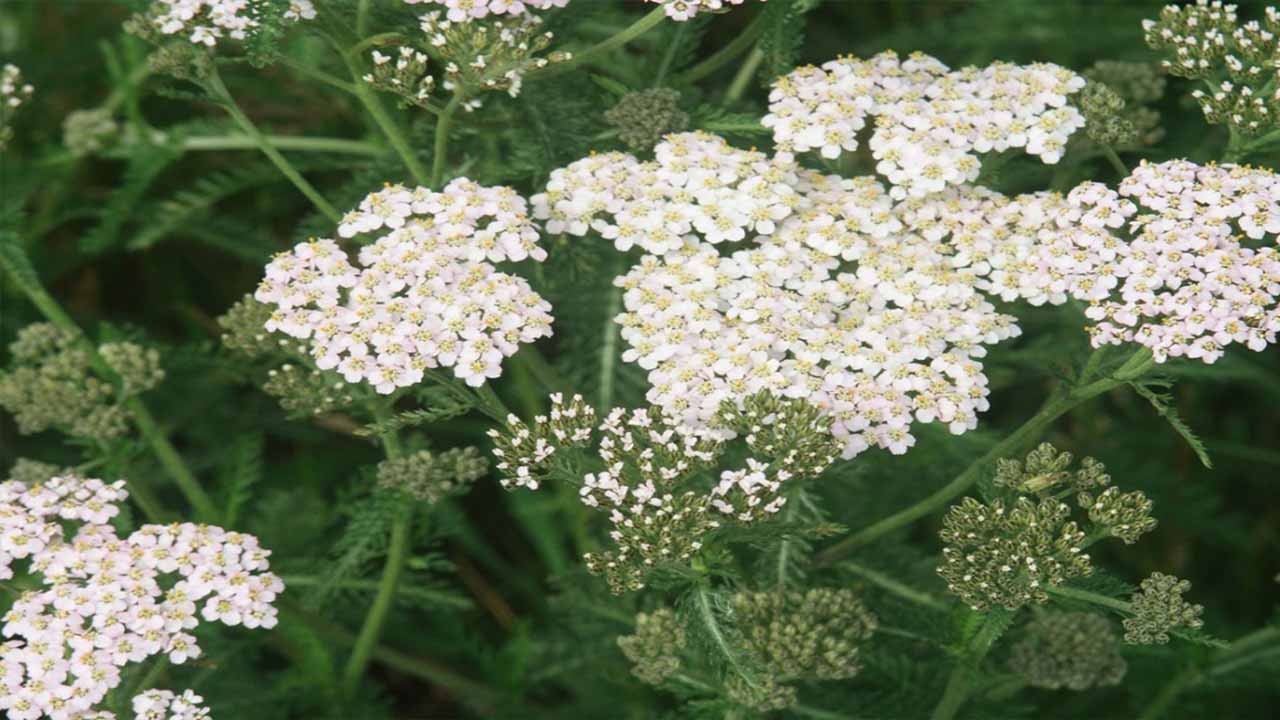
Yarrow can be grown from seeds or starts, with planting times and techniques differing. If you’re sowing yarrow seeds, it’s best to do so in the garden during late spring or early summer, ensuring that the seeds receive light for proper germination.
On the other hand, if you have yarrow starts, dig a hole slightly larger than the root ball, place the plant in, and carefully firm the soil around it. Watering thoroughly after planting helps establish a strong root system for your yarrow plant. Yarrow is a low-maintenance perennial plant that thrives in well-drained soil and full sun exposure. It is drought-tolerant and attracts beneficial insects like bees and butterflies to your garden.
3. Prepare The Soil For Planting Yarrow
Yarrow is a hardy plant that can grow in various soil types, but for optimal growth in heavy clay soils, it is advisable to improve the soil quality by adding compost or organic matter. The soil’s pH level should be between 6 and 7, and incorporating a balanced fertilizer before planting can provide essential nutrients for its growth.
Regular watering, particularly during the initial growth phase, is important for yarrow to thrive. Mulching can help retain moisture and suppress weeds. Once established, yarrow is drought-tolerant. These tips can ensure that your yarrow plants grow healthy and flourish.
4. Water Yarrow Regularly

To maintain the health and vigor of your yarrow plants, it is important to provide regular watering, especially during dry spells. Deep watering aids in promoting extensive root growth while avoiding over-watering helps prevent root rot. Checking the soil’s moisture level by placing your finger on it is a good way to determine when to water. If it feels dry up to an inch deep, then it’s time to water.
A drip irrigation system is also recommended, as it provides a consistent moisture supply. This can help in keeping the soil moist without over-watering the plant. It is also essential to note that yarrow plants prefer well-draining soil and do not thrive in soggy conditions. Hence, ensure your pot or garden bed has adequate drainage to avoid waterlogging issues.
5. Deadhead Yarrow To Encourage Blooming
It is essential to deadhead faded flower heads to promote new growth and keep yarrow blooming throughout the season. Cut off the spent flowers just above healthy leaves using clean garden shears or scissors. This prevents self-seeding and invasiveness and encourages more blooms to appear. Deadheaded flowers can also be collected for use in dried arrangements or potpourri. By regularly deadheading yarrow, you can ensure that your garden remains vibrant and full of color all season long.
6. Fertilize Yarrow To Promote Growth
If you want to promote growth in the yarrow, applying a balanced fertilizer early in the spring is a great way to encourage vigorous growth and increased flower production. Slow-release granular fertilizers are an excellent option and should be applied according to the recommended rates. Alternatively, you can use organic matter or compost around the base of the yarrow plants for gradual nutrient release. However, avoiding over-fertilizing is important as this can lead to excessive foliage and reduced flower production.
7. Divide Yarrow Plants Every Few Years
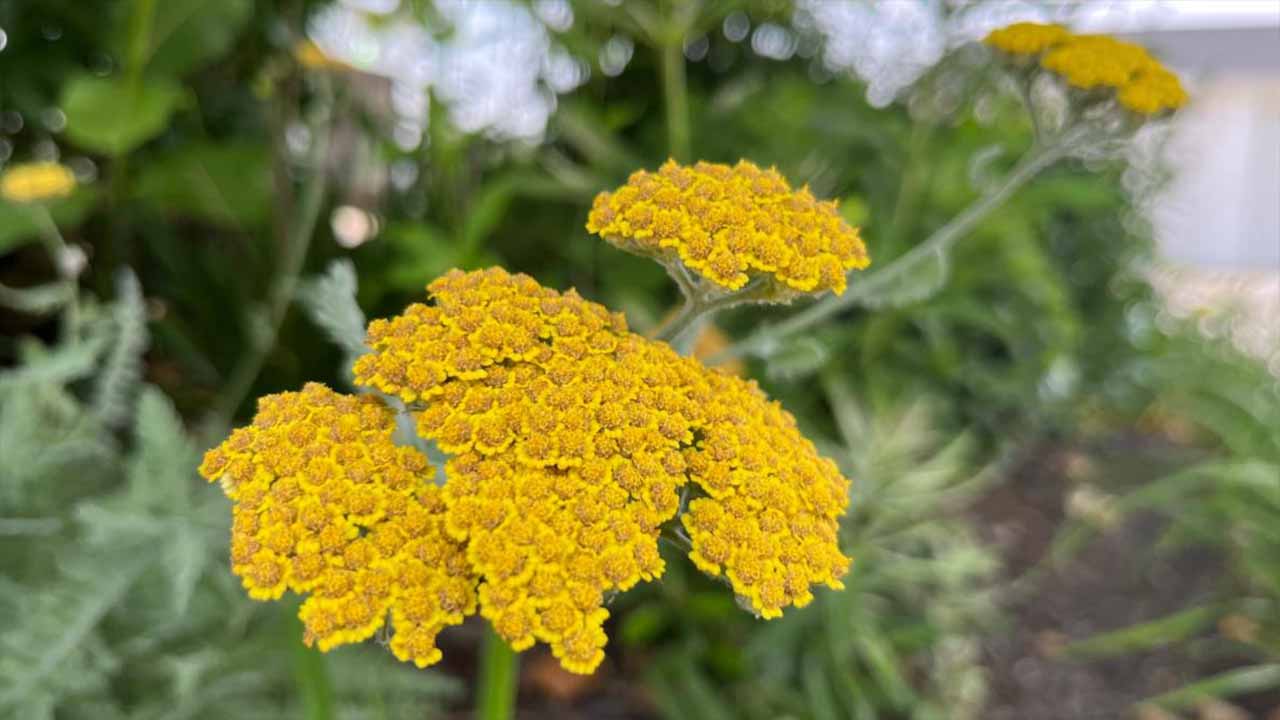
Yarrow plants require frequent division to maintain their vigor and prevent overcrowding. This task is best done during early spring or late fall when the plant is dormant. To divide a yarrow clump, gently separate the roots and replant the split sections at the same depth in prepared soil. After planting, thoroughly water the newly divided yarrow to establish their root systems. Regularly dividing your yarrow plants can help keep them healthy and promote growth in your garden.
8. Control Weeds Around Yarrow
To ensure the success of your yarrow garden, it is important to control weeds. Clear the area around the yarrow to minimize competition for nutrients and water. Mulching can help suppress weeds and conserve soil moisture. Regularly inspect and manually remove any weeds that appear. Avoid herbicides near yarrow, as they may harm the plant. Consider using landscape fabric or plastic mulch to prevent weed growth further.
9. Protect Yarrow From Pests And Diseases
Yarrow is known for being a low-maintenance plant with good resistance to pests and diseases. However, aphids can sometimes infest yarrow during late spring and early summer. You can control aphids by spraying affected plants with a strong stream of water or using insecticidal soap. To prevent powdery mildew, ensure proper air circulation by spacing yarrow plants adequately. Regularly inspect your yarrow for signs of pests or diseases and take appropriate action.
10. Prune Yarrow For A Neat Appearance
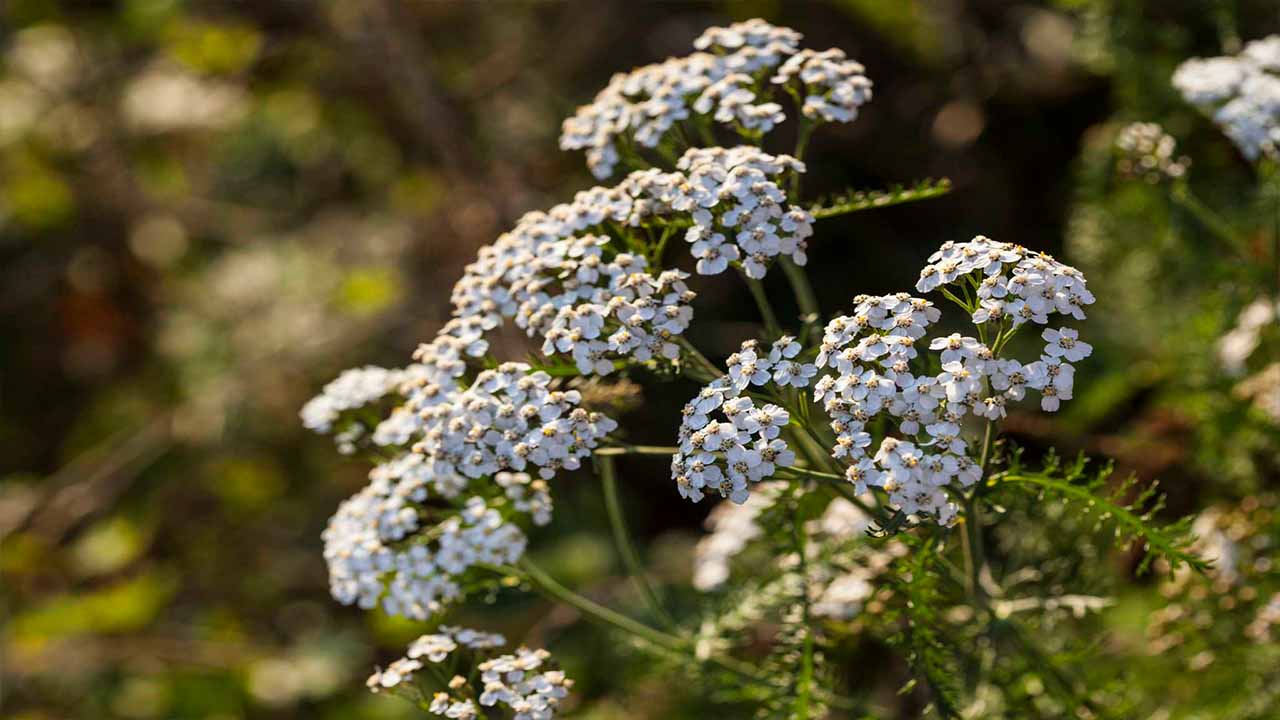
Pruning yarrow offers several benefits, including maintaining a neat appearance and controlling growth. Using clean, sharp tools while pruning is essential to avoid damaging the plant. After the first bloom, cutting back the yarrow encourages a second round of blossoms. Additionally, removing dead or damaged foliage promotes new growth and prevents disease.
Pruning also helps prevent yarrow from overpowering neighboring plants by keeping it in check. However, it is crucial not to over-prune, as this can weaken the plant’s structure and reduce its ability to withstand harsh weather conditions. To ensure proper pruning, it is recommended to research specific pruning techniques for your yarrow species and follow them carefully.
Growing Yarrow From Seed: An Alternative Approach
Growing yarrow from seed can be an alternative approach for those looking to add this beautiful and versatile plant to their garden. While yarrow can also be propagated through division or cuttings, growing it from seed allows for a larger quantity of plants to be produced at a lower cost.
Choose a sunny location with well-drained soil for planting your yarrow seeds. Sow the seeds directly into the soil in early spring or late fall, as yarrow is a hardy plant that can tolerate cooler temperatures.
Keep the soil consistently moist until germination occurs, which typically takes 14-21 days. Once the seedlings have emerged, thin them out to allow proper spacing and airflow. With proper care and maintenance, you can enjoy a vibrant and flourishing yarrow garden in no time.
Yarrow Plant Care: Essential Tips

Caring for yarrow plants is relatively easy, making them popular for many gardeners. By following these care tips, you can enjoy beautiful yarrow blooms in your garden with minimal effort. Here are some essential tips to help you properly care for your yarrow plants:
- Sun And Soil Requirements: Yarrow plants thrive in full sun and well-draining soil. They can tolerate various soil types but prefer slightly alkaline conditions.
- Watering: Yarrow plants are drought-tolerant once established and only require regular watering during dry spells. Overwatering can lead to root rot, so avoiding excessive moisture is important.
- Pruning: Regular deadheading of faded flowers can help promote continuous blooming throughout the season. Additionally, pruning back the plant in late fall or early spring can help maintain its shape and prevent it from becoming too leggy.
- Pests And Diseases: Yarrow plants generally resist pests and diseases, making them low-maintenance. However, they can occasionally be susceptible to powdery mildew. To prevent this, ensure good air circulation around the plant and avoid overhead watering.
Troubleshooting Common Yarrow Growing Problems

While yarrow is generally a hardy and low-maintenance plant, it can sometimes encounter common growing problems. One issue gardeners may face is powdery mildew, which appears as a white powdery substance on the leaves. To prevent this, ensure good air circulation by spacing the plants properly and avoiding overcrowding.
Another common problem is root rot, which can occur if the soil becomes waterlogged. To prevent this, plant yarrow in well-draining soil and avoid overwatering. Additionally, yarrows can attract pests like aphids and spider mites. Regularly inspect your plants for any signs of infestation and take appropriate measures to control these pests, such as using insecticidal soap or neem oil.
How Does Yarrow Benefit Your Garden?
Yarrow is a versatile and beneficial plant to have in your garden. Not only does it add beauty with its delicate, colorful flowers, but it also offers several benefits for your garden ecosystem. Yarrow attracts pollinators such as bees and butterflies, helping to promote pollination and enhance the overall health of your garden.
Additionally, yarrow has medicinal properties and can be used as a natural remedy for various ailments. Its strong scent also deters pests, making it a great companion plant to help protect your other garden plants. Planting a yarrow in your garden is an easy way to enhance its biodiversity, attract beneficial insects, and enjoy this versatile plant’s many benefits.
Popular Varieties Of Yarrow: Expanding Your Garden
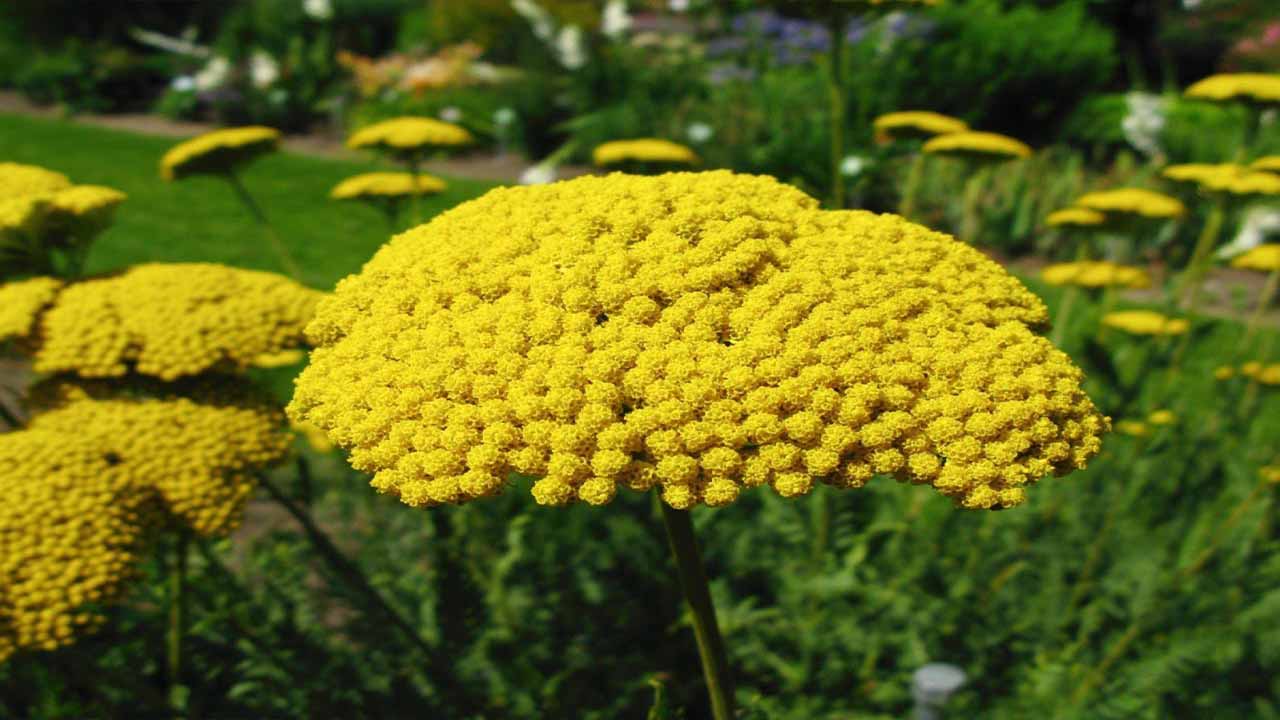
Expanding your garden with yarrow can be a great way to add beauty and diversity to your landscape. You can choose from several popular varieties of yarrow, each with its unique characteristics and colors. One popular variety is the “Moonshine” yarrow, which features bright yellow flowers and silver-gray foliage.
Another popular choice is the “Paprika” yarrow, known for its vibrant red flowers that add color to any garden. If you prefer a more delicate look, the “Apple Blossom” yarrow is a great option, with its soft pink flowers and fern-like foliage.
No matter which variety you choose, yarrow is a hardy plant that requires minimal maintenance and will thrive in various growing conditions. So why not consider adding some of these popular yarrow varieties to your garden and enjoy their beauty year after year?
Can Yarrow Be Planted In Different Types Of Gardens?
Yarrow is a versatile plant that can be planted in different types of gardens. Whether you have a traditional flower garden, a vegetable garden, or even a rock garden, yarrow can thrive in various environments. It is a hardy perennial that is drought-tolerant and can withstand different soil conditions.
Yarrow also attracts beneficial pollinators like bees and butterflies, making it a great addition to any garden. So whether you have a small urban garden or a sprawling backyard, consider adding yarrow to your landscape for its beauty and versatility.
How To Keep Yarrow Blooming All Summer?
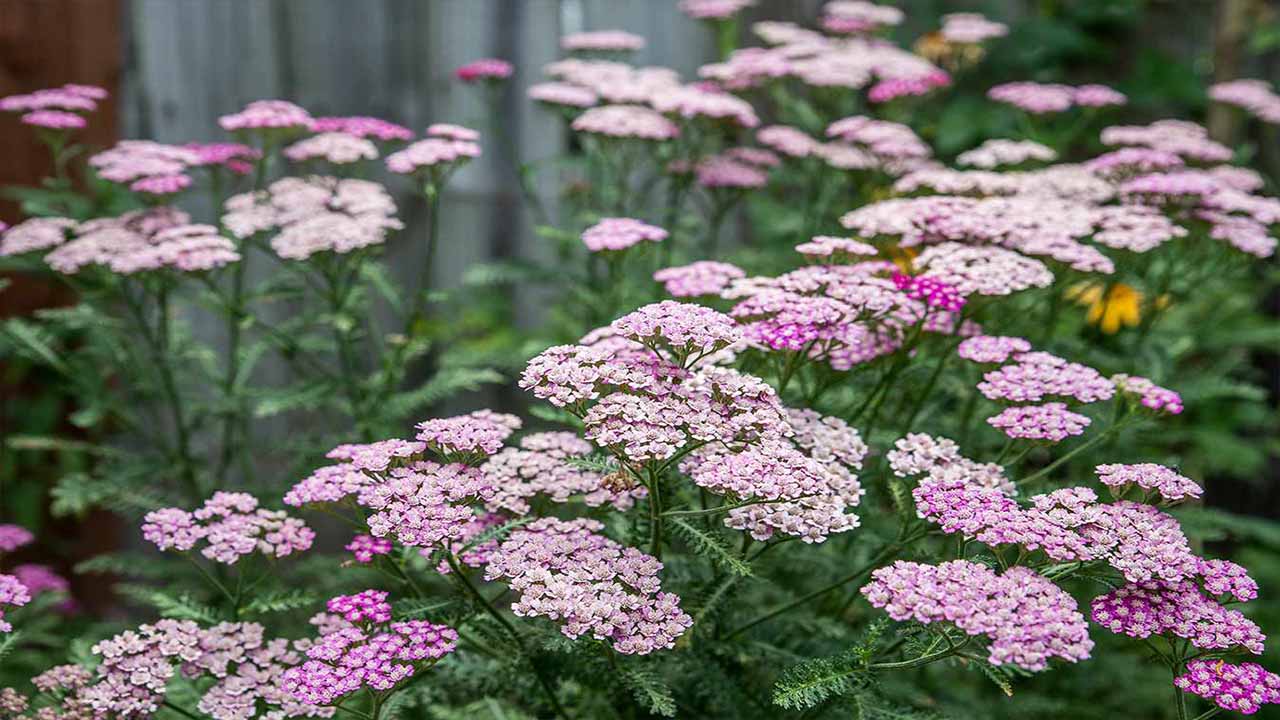
Keeping yarrow blooming all summer can be a rewarding experience for any gardener. Yarrow is known for its beautiful, vibrant flowers and its ability to attract pollinators. To ensure that your yarrow continues to bloom throughout the summer season, there are a few key tips to keep in mind:
- Provide Adequate Sunlight: Yarrow thrives in full sunlight, so make sure to choose a location in your garden that receives at least 6-8 hours of direct sunlight per day.
- Proper Watering: While yarrow is drought-tolerant once established, it still requires regular watering during the hot summer. Make sure to water your yarrow deeply and consistently, allowing the soil to dry out slightly between waterings.
- Deadheading: Regular deadheading of spent blooms will encourage continuous blooming throughout the summer. Simply remove faded flowers by cutting them back to the base of the stem.
- Fertilization: Yarrow generally does not require heavy fertilization, but a light application of a balanced fertilizer in early spring can help promote healthy growth and abundant blooms.
Following these simple guidelines, you can ensure that your yarrow plants stay vibrant and bloom all summer, adding beauty and color to your garden landscape.
Conclusion
To have a successful garden with yarrow, it’s important to choose the right spot, prepare the soil, and provide proper care. Plant yarrow in a sunny location, whether from seeds or starts, and water it regularly. Deadhead yarrow to encourage blooming and fertilize it to promote growth. Every few years, divide the plants and control weeds around them.
Protect yarrow from pests and diseases by identifying and controlling them. Pruning yarrow will give it a neat appearance. Yarrow benefits your garden by attracting beneficial insects and serving as a natural insect repellent. There are different varieties of yarrow to choose from, and they can be planted in various types of gardens. We hope you know planting yarrow made easy.
Frequently Asked Questions
1.Does Yarrow Spread Easily?
Ans: Yarrow tends to spread easily through rhizomes or self-seeding. When planting yarrow, choose a location that allows it enough space to spread without becoming invasive. This spreading ability makes it ideal for ground cover or naturalizing areas. Regular deadheading can help prevent excessive spreading.
2.Can I Plant Yarrow In The Fall?
Ans: Yes, a yarrow can be planted in the fall. Fall planting allows for root establishment before winter dormancy. Ensure well-draining soil and at least six hours of sunlight. Regular watering until the ground freezes promotes proper root growth.
3.Does Yarrow Take Over A Garden?
Ans: Yarrow can spread rapidly and become invasive if not managed properly. To control its growth, consider planting yarrow in a container or using barriers like rocks or edging. Regular pruning and deadheading can also help prevent yarrow from taking over your garden. However, remember that yarrow’s spreading tendencies can be beneficial in naturalizing wildflower gardens.
4.Where To Plant Yarrow In The Garden?
Ans: Yarrow thrives in full sun and can tolerate some partial shade. Ensure well-draining soil with a pH between 6.0 and 7.5. Plant it in garden beds, borders, or containers, but be cautious of other invasive plants as yarrow spreads quickly.
5.What Is Yarrow Used For?
Ans: Yarrow, a medicinal herb used for centuries, has versatile applications. It aids in wound healing, and reduces fever and inflammation. Yarrow is also beneficial for digestive issues, menstrual cramps, and anxiety. In the garden, it acts as a natural insect repellent and adds beauty to flower beds.








